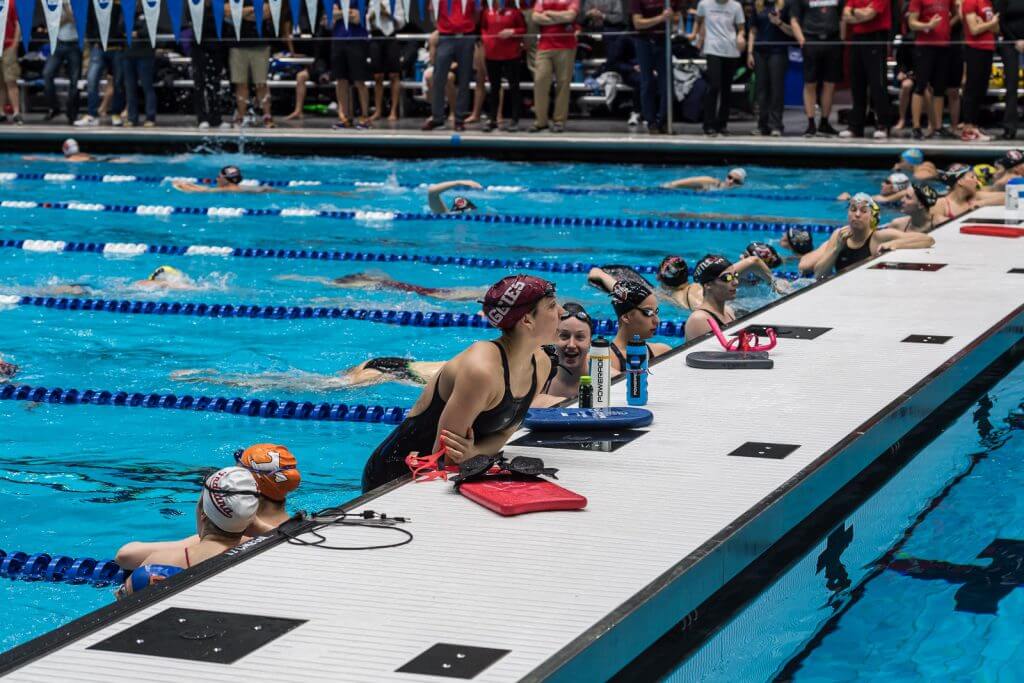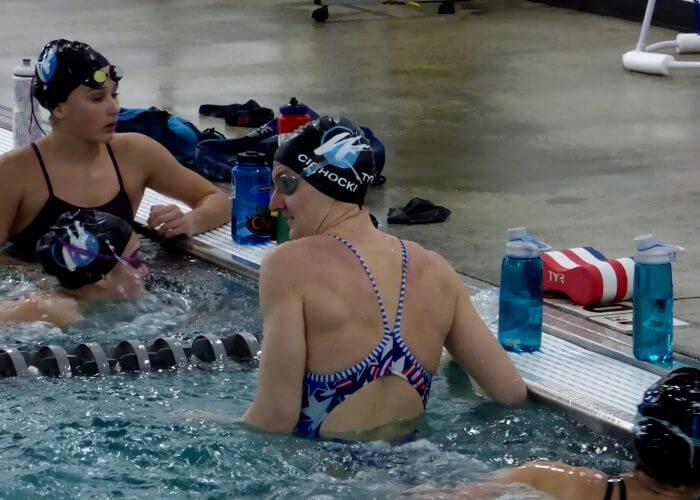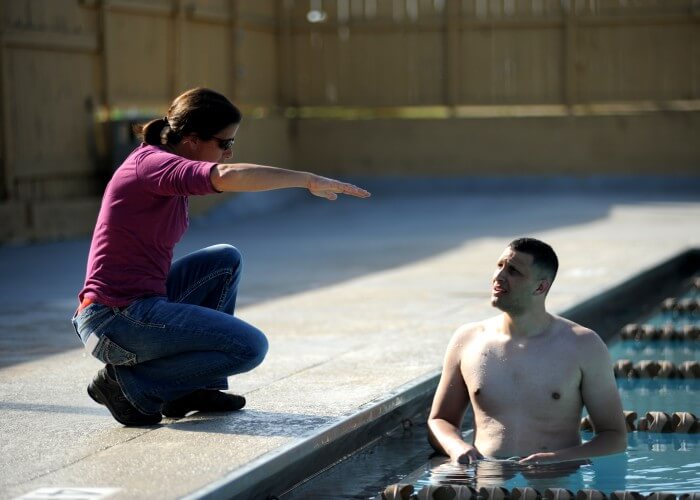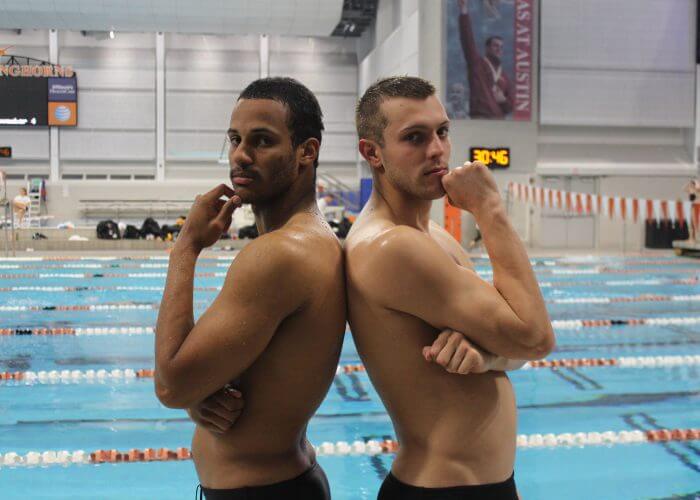3 Ways to Use Garbage Yardage as an Opportunity to Improve

By Michaela Morrison, Swimming World College Intern.
Garbage yardage – a catchy term coined by many age group swimmers – refers to a boring practice that seems to have little purpose. The term can cover a wide range of practices, from swimming 10 hard 1,000-yard freestyle efforts to a sprint set with manageable intervals.
Whether swimmers admit it or not, the sport has primed them to seek a feeling of accomplishment from difficult sets. If they don’t feel challenged, the practice can seem like a waste of time.
Perhaps the greatest thing about swimming is variety – practices are rarely ever the same, and there are countless variables to be trained and isolated (such as starts, turns, and four different strokes). The swimmers’ responsibility is to figure out how they can consistently increase their productivity in practice.
Here are some aspects of your training to consider working on the next time you are faced with a garbage yardage set.
1. Visualize your race.

Photo Courtesy: Julie Kolar
Whether it’s a set of repeat freestyle or some stroke work, picture yourself swimming your race and executing the perfect race technique. Out of the water, visualization is difficult for some. Minds tend to wander, and some swimmers only seem to be able to visualize their bad habits. Mindfulness and visualization take practice, and sometimes it can be okay to visualize something going wrong as long as you also visualize how to fix it.
Pick apart your race in your mind, and work on that one 50 of your 200 that gives you some trouble. This will not only make the practice more interesting but also boost your confidence come race time.
2. Work on your weaknesses.

Photo Courtesy: Lance Cpl. Michael C. Guinto
What better opportunity than today to work on that technical detail you’ve been meaning to improve? Ask yourself if your turns could be faster. Are you pushing off the walls in streamline? Ask your coaches to watch a few reps to give you feedback that they might not ordinarily be able to during a regular high-intensity practice.
A common aspect of swimming that suffers a great deal are turns. Swimmers complete anywhere from 60-100 (or more) turns in a single practice. The quality and effectiveness of our turns – or lack thereof – compound very quickly.
The turn is initiated on the last few strokes going into the wall, so it is crucial to maintain speed in and out of our walls. Practice picking up your speed into your turn and using that speed to explode off of the wall.
Underwater kick-outs are another aspect of swimming that can become lazy throughout a practice. When a swimmer’s lungs start to burn, it becomes harder and harder to extend all of those underwater kicks. This set could have been a garbage yardage set, but instead, you became a proactive swimmer and decided to play around with how many kicks and how much speed you could hold off of each wall.
Breakouts set the tone for the race. A slow breakout will put that cut you’ve been working for completely out of reach. Use that speed you’ve built up from your turn and underwaters to carry you into a strong breakout.
3. Reset your mind.

Photo Courtesy: Andy Ringgold / Aringo Photos
It’s not every day that you swim a set that doesn’t make you want to hide in the locker room, so take advantage of this opportunity to work on details in a low-stress environment. Use this practice as a way to renew your mindset for the upcoming practices.
Remind yourself that you made the decision to come to practice to become better. Think about everything you want to accomplish in the sport and take the time to work on details that can help you improve.
Practicing without a purpose is when practice can really seem like garbage yardage. Be proactive with your swimming, and take ownership of your improvement!
Commentary: All commentaries are the opinion of the author and do not necessarily reflect the views of Swimming World Magazine nor its staff.




If there’s no point to a set, that it is considered garbage yardage, why do it? That’s another word for overtraining. If you are doing something just to fill time, you probably could be using that time more wisely. Your athletes definitely could.
There is no such thing as garbage yardage — unless you make it garbage yardage !!!
Haley Markos “Junk Garbage”
haha I should take this advice….
I did an aquathlon tonight and opted for the “long course” swim portion, it was a mile open water then 5k run, are you proud?
Haley Markos So proud!